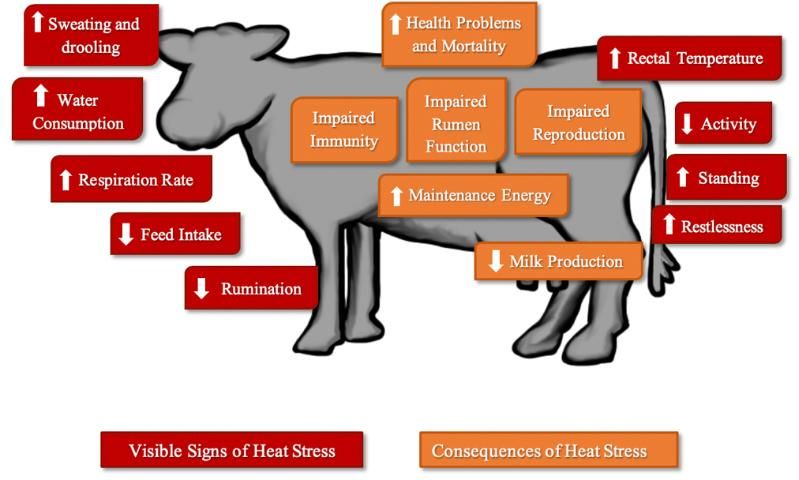Recognizing Heat Stress in Dairy Cows
This publication is best viewed in pdf form.
The key to manage heat stress is to understand when heat stress begins!
What is heat stress?
Heat stress occurs when the heat produced by a dairy cow's biological processes and the heat the cow absorbs from the environment exceeds the cow's capacity to lose heat.

The relationship between THI, heat stress levels and body responses such as respiration rates and rectal temperature.
Negative Effects of Heat Stress
In persistent hot, sunny, and humid conditions, the cow's cooling mechanisms are insufficient to dissipate all the heat accumulated and as a consequence, the cow's body temperature begins to rise, triggering a cascade of physiological changes to reduce this excessive heat load in the body.
- Behavioral Changes
- Health Issues
- Impaired Reproduction and Immune Performances
- Decreased Milk Production
- Decreased Profitability
By the time physical indicators of heat stress are observed, production losses have already begun!
What are the visible signs and consequences of heat stress in dairy cows?



